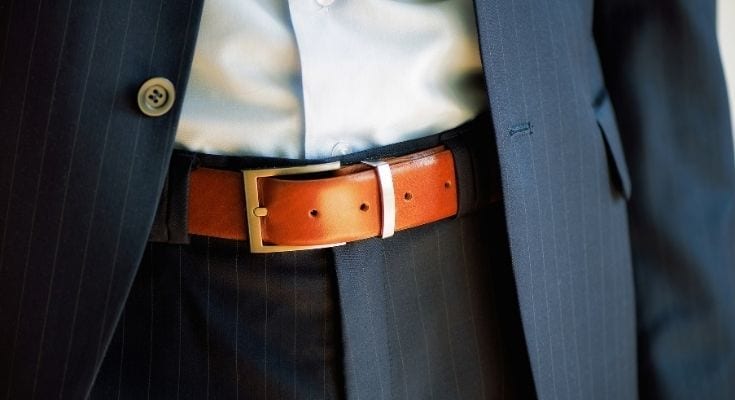It’s probably holding up your pants right now, but do you ever take a moment to appreciate the history and evolution of the belt? It’s been a long journey from caveman to cargo pants, and you might be surprised at how the significance of belts has changed over the centuries.
In Prehistoric Times
A Neanderthal’s got to carry pelts and weapons one way or another, and so the utility belt was born. They used softened tree bark, which was softer and pliable, until the first documented occurrence of belts made of cloth during the Bronze Age.
In Medieval Times
The belt first became a fashion accessory in the Medieval era, when they distinguished the upper classes from the peasants. Women embraced the power of elaborate belts made of pu leather and metal, often in the shape of a chain low on the hips with the excess hanging down. Lower classes carried around their few coins and possessions in simple leather belts with pouches. The notorious chastity belt, a term coined during this time, may have been more myth than reality. Recent research suggests that people might have used “chastity belts” in a joking manner or as a metaphor for virtue.
In the 13th Century
Feudal Japan focused on belts to signify status. Wide uwa-obi belts contrasted with the kimonos to announce that a samurai was present and may have a sword or two tucked away. Often made of linen, the belt wound a few times around the body and was accented with a piece of leather in the middle—so that fighters could find their weapons and equipment in the dark. It wasn’t until the 1880s that colored belts began to denote rank.
In the 19th Century
The military in places like Prussia, Tsarist Russia, and other Eastern European nations relied on belts to make their uniforms more dashing. They were often so tight that many officers wore corsets underneath to make their waists look trimmer and their chest and shoulders wider.
In the 20th Century
Belt loops finally appeared on sportswear, and customized buckles became “cowboy calling cards” in the West. In the ’20s, the popularity of belts briefly faltered as flappers rejected confining clothes for drop-waist dresses. By the ’50s, they were more indispensable than ever, with Christian Dior’s severe, wasp-waisted designs. In the ’70s, Elvis wore wide, glittering belts with his jumpsuits in Las Vegas, while punk artists conveyed their anarchic attitude with spiked, studded belts.
Today
The history and evolution of the belt bring us here, with ubiquitous sagging pants that would drop to the floor without them. Hip-hop stars like Post Malone and Tyler The Creator and drag queens have popularized the statement belt, a style flex with attention-getting details like Swarovski crystals, fur, and neon colors. Everything old is new again in fashion cycles, with modern updates of almost everything from the past: obi, corset, western, and chain. And the classic caveman’s pelt belt? It lives on, against all odds, in the reinvented form of the fanny pack.
FAQ
When did belts become a part of fashion?
The belt first became a fashion accessory in the Medieval era, when they distinguished the upper classes from the peasants. Women embraced the power of elaborate belts made of leather and metal, often in the shape of a chain low on the hips with the excess hanging down. Lower classes carried around their few coins and possessions in simple leather belts with pouches. The notorious chastity belt, a term coined during this time, may have been more myth than reality. Recent research suggests that people might have used “chastity belts” in a joking manner or as a metaphor for virtue.


